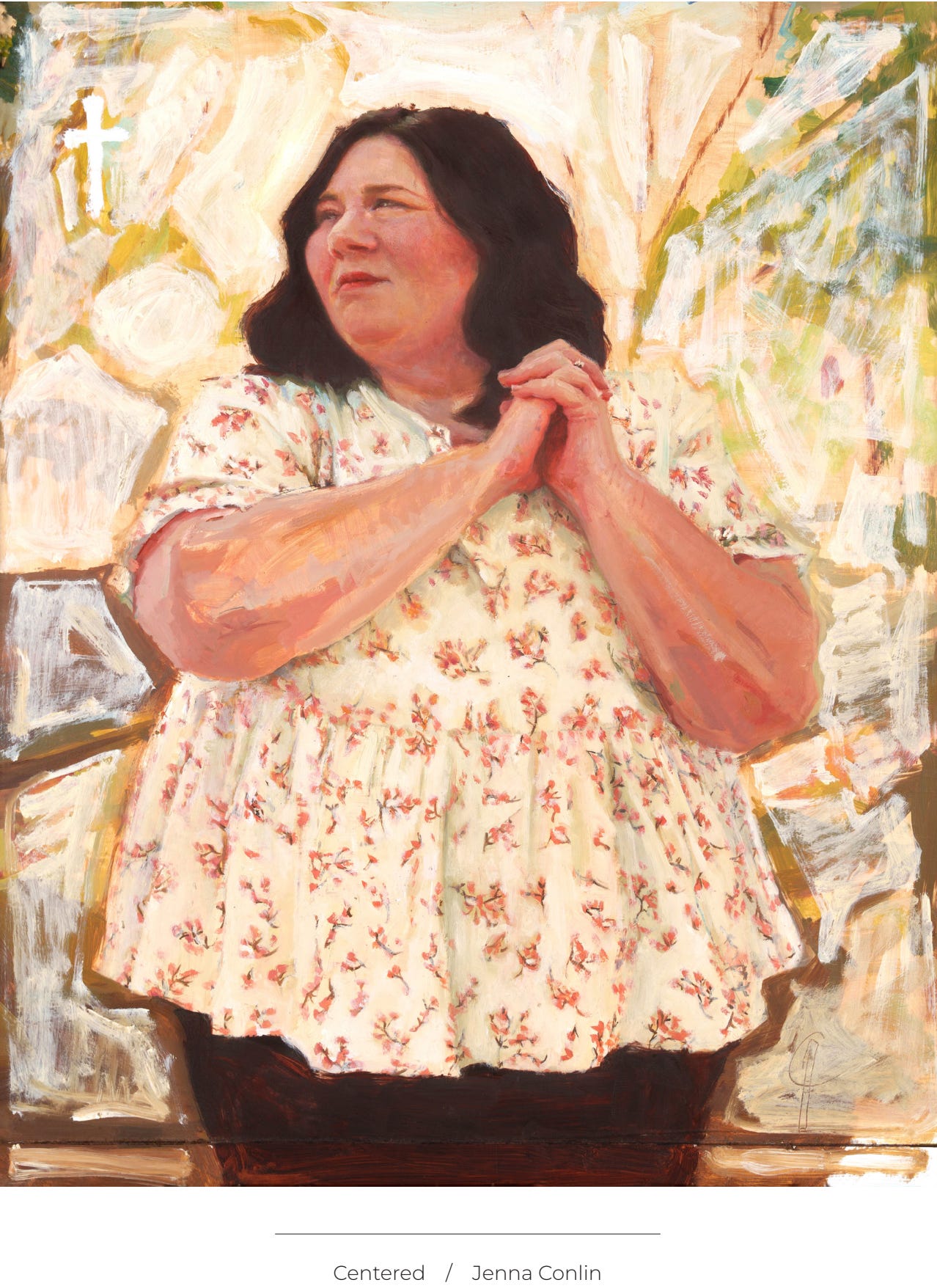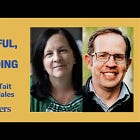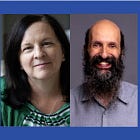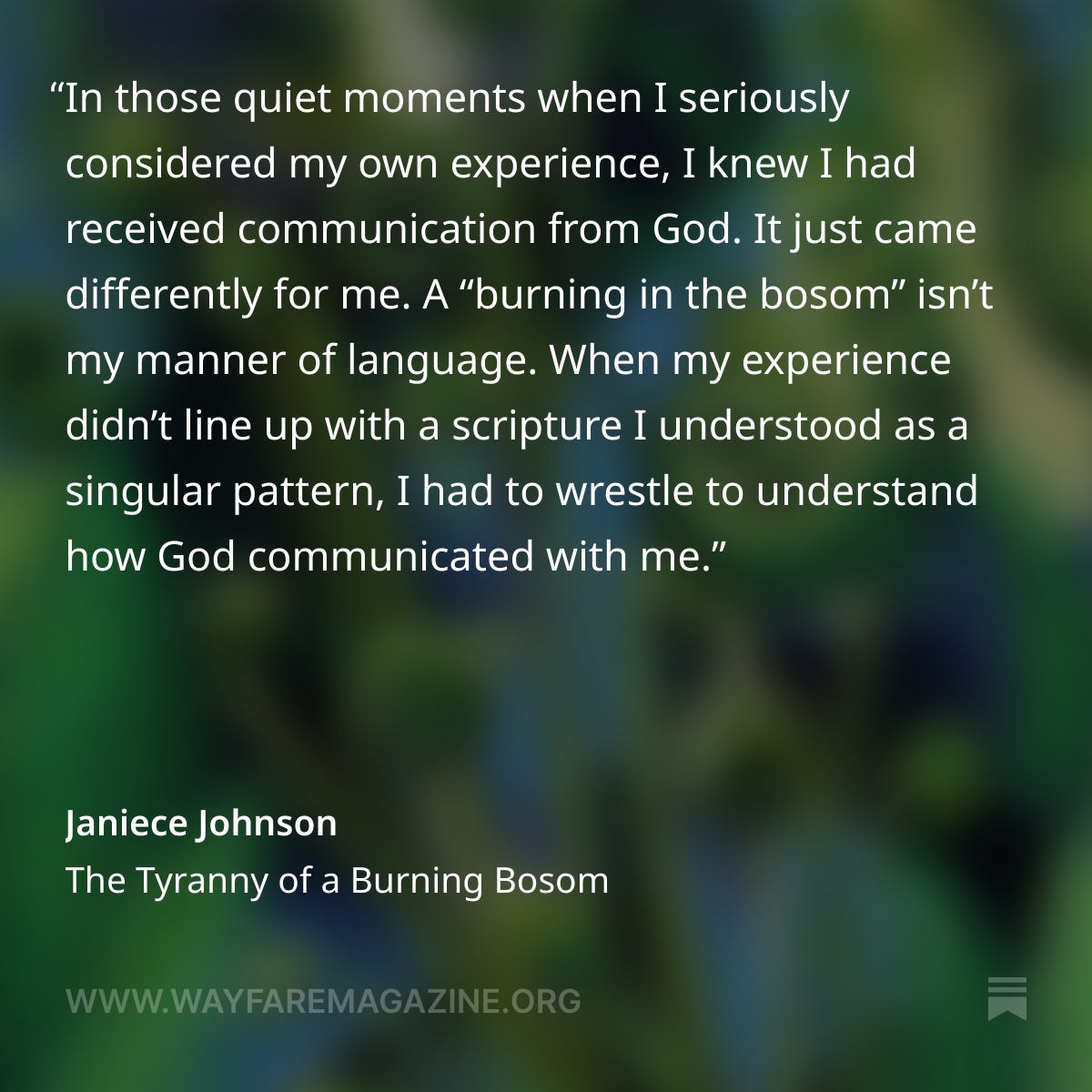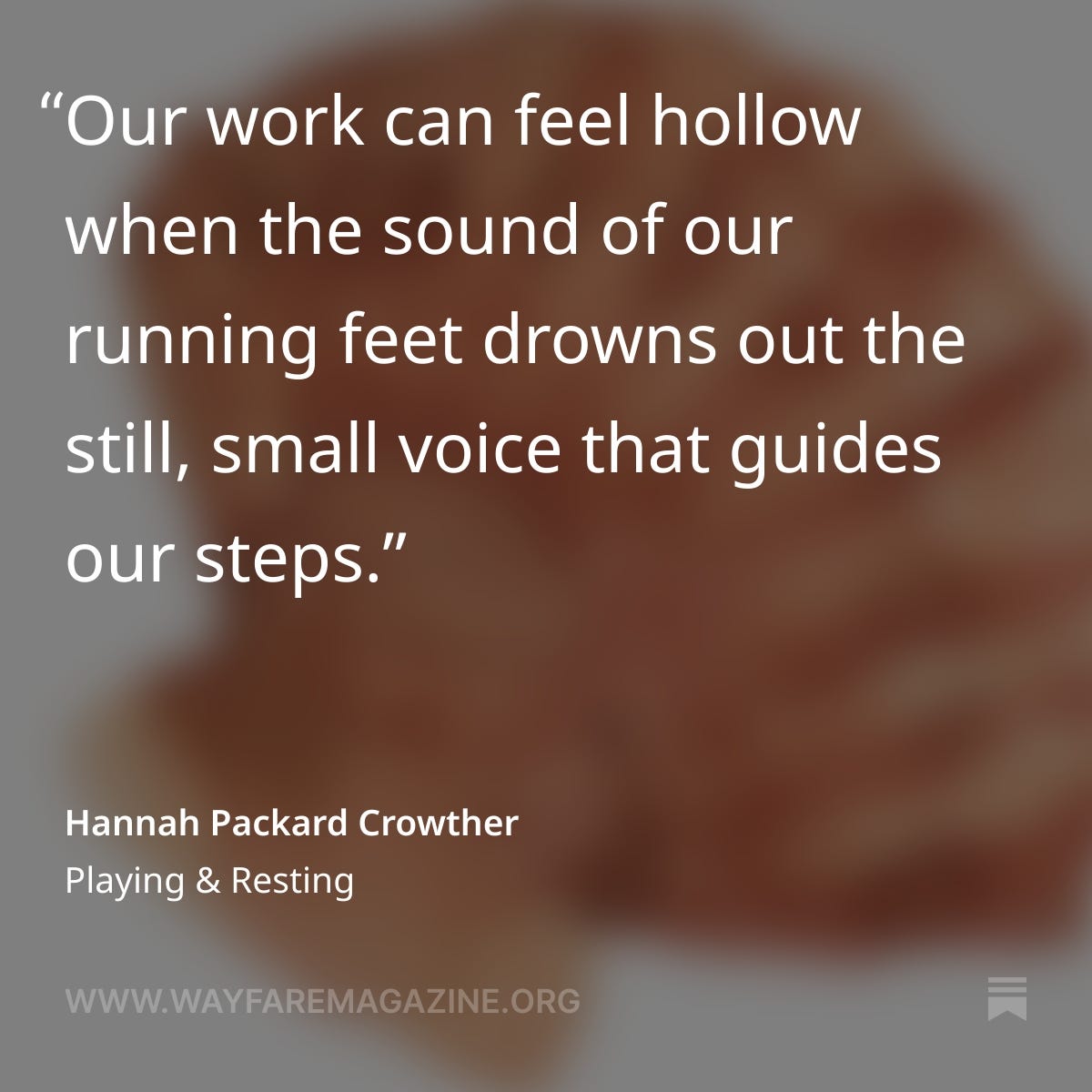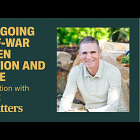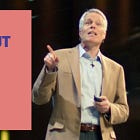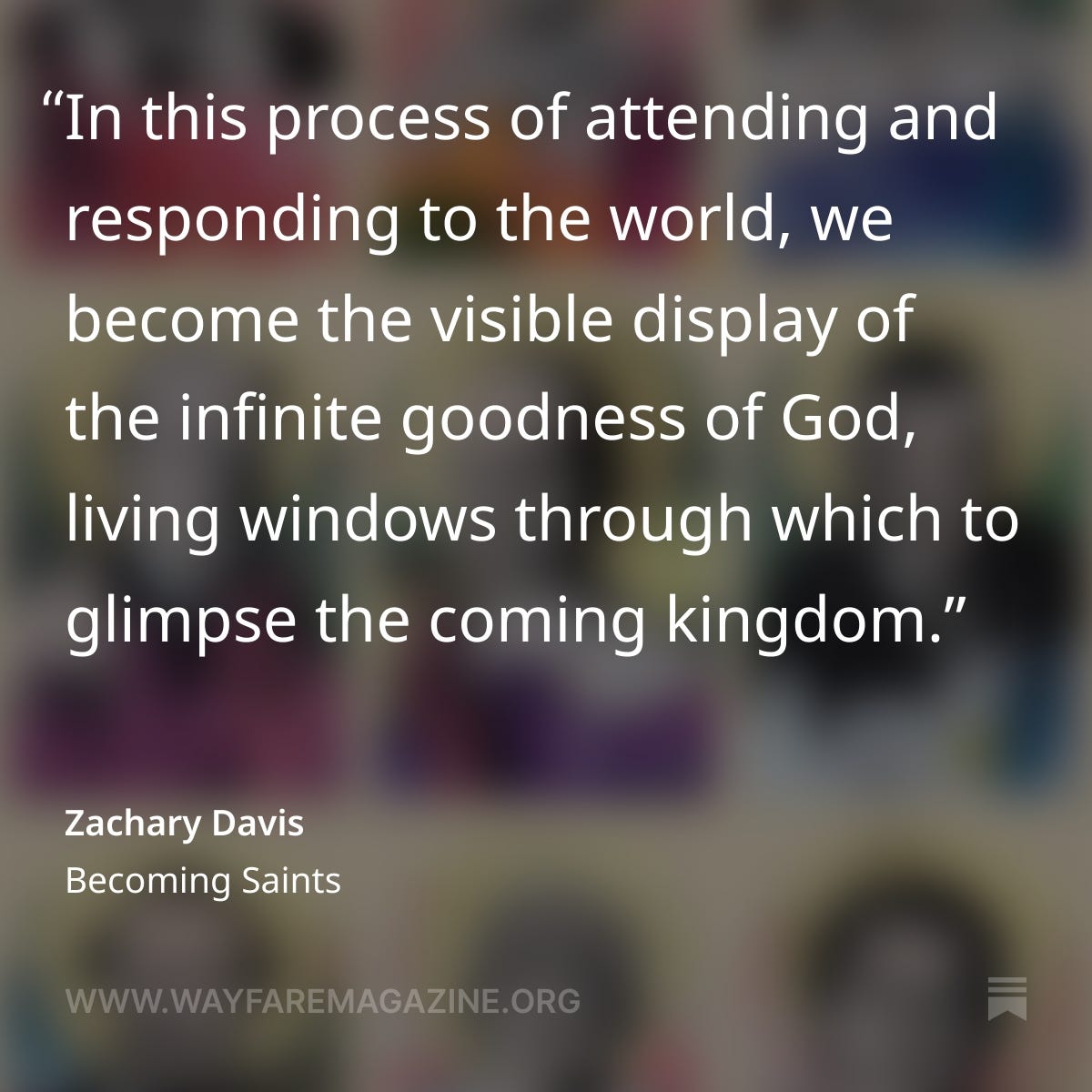What does it mean to "stand in holy places"?
Faith Matters resources to accompany your Come Follow Me study: August 4-10
The Lord wants me “to keep a history.”
The Spirit speaks with a “still small voice.”
I find a lot of times that the way answers come to me is that God will bring my attention to something and then just be silent. I know to attend to this thing and think about it more carefully so that the silence becomes, in my experience, a mode by which God communicates with us. It's a way of directing our attention to something without giving us the impression reduced to two sentences.
You know, our King James Bible has a phrase that is translated “still small voice,” right? It's how the Holy Ghost speaks to us. The focus there is on what's being spoken. But some other biblical translations have that not as still small voice, but as “thin silence.” And what I love about that is that there's nothing to grab onto there.
It's silence, but it's a thin silence. You detect the presence of God. So, the focus in that translation is not on what's spoken, but rather on what is momentarily withheld: this thin silence behind which God resides or dwells. I find that to be a great way to think about how many an answer to prayer comes— not as words given, but as a sense of God's presence even in things we can't quite grasp yet in the moment.
—Matt Wickman, “Thin Silence”
The Doctrine and Covenants centralizes a listening heart in its dual epistemology of revelation, which spans both the discursive and the contemplative faculties: “I will tell you in your mind and in your heart, by the Holy Ghost, which shall come upon you and which shall dwell in your heart” (D&C 8:2). Joseph Smith thus encouraged the contemplative novice: “A person may profit by noticing the first intimation of the spirit of revelation.” The Doctrine and Covenants describes a fuller measure of contemplative grace in evocative language: “The still small voice, which whispereth through and pierceth all things, and often times it maketh my bones to quake while it maketh manifest” (D&C 85:6).
—Michael Ferguson, “American Mystic: The Contemplative Spirituality of Joseph Smith”
The righteous are gathered to Christ in the last days. I can help gather God’s people.
The Body of Christ is very diverse, and we need everyone… The interesting thing about the gathering of Israel is the G-word—gather, right? Sifting comes later, and it’s not our job.
Remember, we’re fishers of men. God is the sorter of the fish.
—Jeff Strong
I think we reject Church history and [the] Hebrew Bible/Old Testament for the same reasons—because we want to take one standard, and we want to just sort good, bad, right? And it's almost what Jesus told us not to do in that parable of wheat and tares, because he's going, it's all mixed together, guys. You can't tear the one out without tearing out the other.
—James Goldberg
Despair is caused by an obsession with individual salvation, a project that you've taken on. I've got to fix this son. I've got to fix this daughter. And that's not the plan. The plan is for you to be involved in universal atonement in the larger gathering of Israel.
—Joseph Grenny
In the first decade and a half of the Church’s life, we sought to save the world by gathering converts to Zion. During those years, we concentrated the gathered membership in single cities. Independence, Far West, and Nauvoo took turns being Zion—the safe havens in the coming apocalypse. After the move west, new converts gathered to a new Zion: a region of Great Basin villages, more or less patterned after the original plat for the City of Zion in Missouri. In the twentieth century, gathering took still another form as saints planted “stakes” throughout the world and gathered locally to build mini-Zions. Stakes were established first in Denver and the great western coastal cities—Los Angeles, San Francisco, Portland, and Seattle—and then by the 1940s in New York and Washington D.C. We were to save the world by gathering people into these stakes, which theoretically could be planted anywhere. Today, there are Latter-day Saint outposts in virtually every part of the world where the law permits. Gathering now is not only to the cities of the midwest or Great Basin villages, but likewise to stakes in Indonesia and Africa and across the world.
In all of this expansion, we are left with a pressing question: what of those who do not obviously want to be “gathered?” Missionary efforts go on apace—we continue inviting the world’s citizens to gather into worldwide stakes by joining themselves formally to the Church. But what about the vast majority of the world’s population—those who either never hear the call to gather or who hear but, for any of a thousand reasons, never heed it? What is our responsibility toward the billions of our brothers and sisters who do not heed our message? I believe that we are beginning to understand that we have a responsibility to better the world for all of its citizens, whether they choose to be gathered or not.
—Richard Bushman, “How to Save the World” from Issue 1 of Wayfare
Peace is found in “holy places.” I can “stand … in holy places.”
The path to peace, the path to hope, the path to a sense of power is when an individual that you are concerned with wants nothing from you, what you do is you get involved in collective atonement.
—Joseph Grenny
As revelation began to flow, the earth under Joseph’s feet became holy ground in widening circles of sacred geography. The remnant of the house of Israel? They’re here, just down the river. New Jerusalem, site of the second coming? Watch this space, coming soon. The garden of Eden, primordial belly button of the world? It’s here too, in Missouri. Eve ate the apple on the same Ozark highland where my robin ate the inchworm.
If you find a touch of the absurd in this, I agree. We’re accustomed to thinking of the sacred as something apart, exalted. And we have good reason: the roots of the word sacred contain the idea of something protected and removed from ordinary settings, everyday experience. Sacred space is an ancient land, a walled garden, or the top of a mountain, the higher the better. But the restoration introduced a low-elevation version of sacred geography. Right here, at ground level, among normal places and events, sacred things happened. …
As the Restoration unfolded, these geographic circles extended outward with no apparent limit. A general principle came into view, a kind of axiom of the Restoration: the whole world is holy, because it is where we encounter God. In time, Joseph understood that these sacred circles, always widening underfoot, were both geographic and metaphysical. The spirit world? Look around, it’s here. Heaven? Also here, wherever you are. Eternal life? The people and relationships closest to you.
—Rosalynde Welch, “Airborne at Low Elevation”
What is a prophet, and what is a priest? Why does it matter that the President of the LDS Church is both a prophet and a priest? How can better understanding each of those roles change how we experience our membership in the Church? Learn from Matthew Bowman in “The Prophet and the Priest,” an essay on WayfareMagazine.org:


